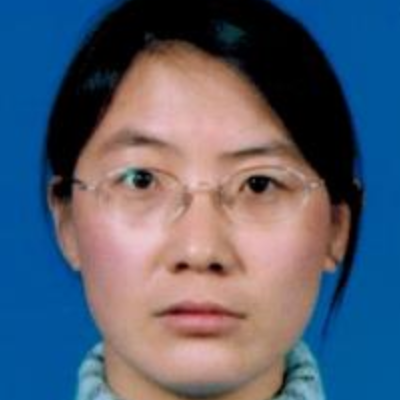International Journal of Modern Education and Computer Science (IJMECS)
IJMECS Vol. 7, No. 11, 8 Nov. 2015
Cover page and Table of Contents: PDF (size: 342KB)
Research on Fuzzy Comprehensive Evaluation in Practice Teaching Assessment of Computer Majors
Full Text (PDF, 342KB), PP.12-19
Views: 0 Downloads: 0
Author(s)
Index Terms
Practice teaching, Computer major, Fuzzy comprehensive evaluation, Assessment, Membership
Abstract
Practice teaching is an inseparable part of professional courses for computer majors, which helps to cultivate capability of coding and engineering for students. Progress assessment and result assessment are two common ways to assess the practice teaching. But only by class attendance and programming result, it is not scientific and reasonable for all students to get the final assessment result. And it is not scientific to evaluate teaching quality only by classroom observations or instructional supervision too. How to assess the practice teaching from multiple perspectives scientifically is key point of this paper. A new assessment called fuzzy comprehensive evaluation from different targets collecting from five assessment means is adopted to complete the task. Based on five targets of grade 1 and corresponding targets of grade 2, one fuzzy matrix is constructed with membership determining and one quantitative result is obtained based on calculation of fuzzy matrix. This assessment method breaks through the knowledge barrier and puts emphasis on competence assessment and teaching evaluation, which improves teaching quality in the teaching process. Adopting this assessment method, students’ learning effects can be assessed objectively and fairly, which will result in inspiring students’ passion for independent learning and helping them to build employment challenge self-confidence with optimistic and positive attitudes. And teachers will get effective feedback and professional suggestions from experts, students and management department to improve their practice teaching in the future.
Cite This Paper
Shuang Liu, Peng Chen, "Research on Fuzzy Comprehensive Evaluation in Practice Teaching Assessment of Computer Majors", International Journal of Modern Education and Computer Science (IJMECS), vol.7, no.11, pp.12-19, 2015. DOI:10.5815/ijmecs.2015.11.02
Reference
[1]S. Liu, P. Chen, “Research on cultivation of ethnic minorities IT talents in nationalities universities,” International Journal of Modern Education and Computer Science, 2014, no. 2, pp.33–40.
[2]S. Liu, P. Chen, “Adoption of Employment-oriented Experience Training Program to Improve Undergraduates Employment Competence,” International Journal of Modern Education and Computer Science, 2012, vol.4, no.2, pp.52–58.
[3]Y. Zhou, C. J. Xing, “Research on Assessment Method of Practice Teaching for Computer Majors,” Computer Education, 2013, no.12, pp.59–62.
[4]L. P. Zhang, D. S. Liu, C. H. Wang, “Reform and Practice of The Evaluation Method of Programming Courses,” Computer Education, 2010, no.2, pp.17–29, 16.
[5]Q. H. Do, J.-F. Chen, “An Evaluation of Teaching Performance: The Fuzzy AHP and Comprehensive Evaluation Approach,” WSEAS Transactions on Information Science and Applications, vol.10, no.3, pp. 90–99.
[6]P. Dong, F. Dai, “Evaluation for Teaching Quality Based on Fuzzy Neural Network,” Proceedings of the First International Workshop on Education Technology and Computer Science, 2009, pp. 112–115.
[7]Z. M. Zhu, “Application of Data Mining Technology in the Information Technology of College English Teaching,” Advance Journal of Food Science and Technology, 2013, vol.5, no.7, pp. 969–975.
[8]H. Y. Ma, J. K. Chen, N. Yang, et al. Application and Study of Ordinal Decision Tree in the Teaching Quality Evaluation,” Journal of Applied Sciences, 2013, vol.13, no. 19, pp.3903–3908.
[9]J. Yang, H. Jiang, H. Zhang, “Teaching Assistant Evaluation Based on Support Vector Machines with Parameters Optimization,” Information Technology Journal, 2011, vol.10, no.11, pp.2140–2146.
[10]X. Shun, H. Chang, “An Analysis of Teaching Quality and Employment Status Based on Rough Set,” Information Technology Journal, 2012, vol.11, no.4, pp.508–511.
[11]M. Luo, “Application of AHP-DEA-FCE Model in College English Teaching Quality Evaluation,” International Journal of Applied Mathematics and Statistics, 2013, vol.51, no.21, pp.101–108.
[12]R. Song, T. Liu, “The Application of Modified BP Neural Network Method to the Evaluation of the Quality of Teaching,” Advanced Materials Research, 2013, vol. 710, pp. 628–632.
[13]X. Lian, L. Yu, X. Guang, “Evaluation of Quality of Teaching Based on BP Neural Network,” Journal of Chemical & Pharmaceutical Research, 2014, vol.6, no.2, pp. 83–88.
[14]C. Y. Shao, “The Implication of Fuzzy Comprehensive Evaluation Method in Evaluating Internal Financial Control of Enterprise,” International Business Research, 2009, vol.2, no.1, pp.210–214.
[15]N. Ramli, D. Mohamad, N.H. Sulaiman, “Evaluation of teaching performance with outliers data using fuzzy approach,” Procedia-Social and Behavioral Science, 2010, vol.8, pp.190–197.
[16]X.N. He, Z.Q. Zhu, Y. Zhou, G.Y. Lu, Q. Y. Liu, “University Teaching Quality Evaluation Using Fuzzy Comprehensive Evaluation Approach,” Proceedings of the Second International Workshop on Education Technology and Computer Science, 2010, pp. 616–619.
[17]J.-F. Chena, H.-N. Hsieha, Q. H. Do, “Evaluating teaching performance based on fuzzy AHP and comprehensive evaluation approach,” Applied Soft Computing, 2015, vol.28, pp. 100–108.
[18]S. Yin, W. Chen, W. Wang, “Network Teaching Intelligent Evaluation Method Research on Fuzzy Comprehensive Judgment,” ICIC Express Letters, 2011, vol.4, no.5, pp.1255–1260.
[19]X. Lian, L. Yu, X. Guang, “Study on the Analytic Hierarchy Process and Fuzzy Comprehensive Evaluation on the Quality of Teaching,” Journal of Chemical & Pharmaceutical Research, 2014, vol.6, no.2, pp.89–95.
[20]H. Li, “A Teaching Quality Evaluation Model Based on a Wavelet Neural Network Improved by Particle Swarm Optimization,” Cybernetics and Information Technologies, 2014, vol.14, no.3, pp.110-120.

